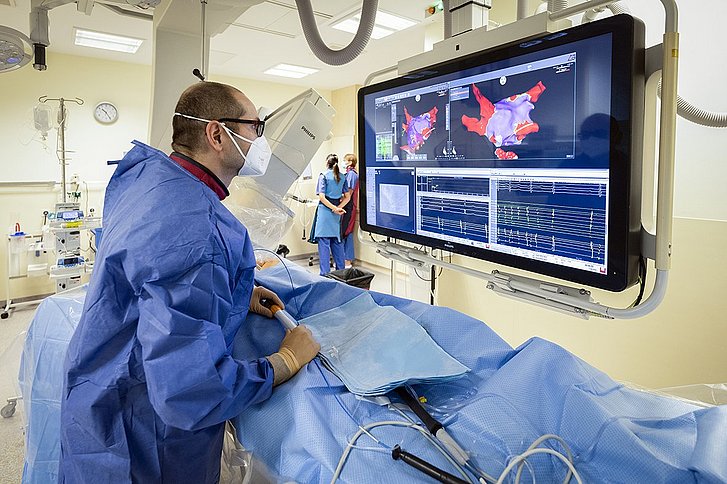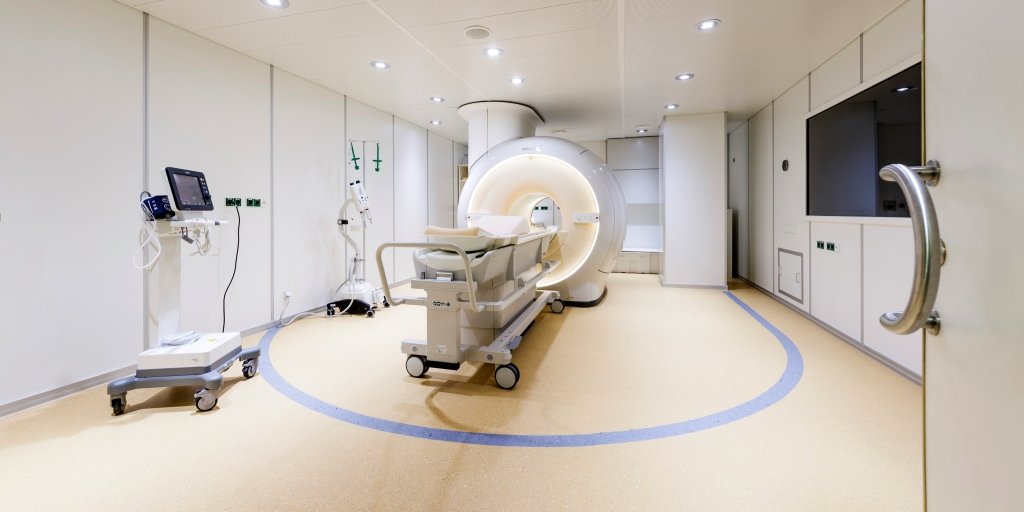Preparations for treatment:
After we have your results recommending an intervention in the EP laboratory, your actual treatment will commence. You must not eat for six hours or drink for four hours before it begins. Immediately prior to the EP, venous access will be established in the back of your hand, through which drugs and fluids can be administered.
Introducing the catheter:
A catheter is now introduced through a vein in your groin, which is passed to the right atrium of the heart; if the focus of the cardiac arrhythmia is in the right atrium, the atrial septum is also passed. You shouldn't worry about this procedure: you will feel very little of what has just been described. Moreover, our therapies and interventions are conducted by highly specialized doctors with considerable experience in the EP laboratory.
Locating the arrhythmia:
The actual electrophysiological examination begins once the catheter has been introduced into the right atrium. Electrical signals which are directly related to your cardiac arrhythmia are measured. An ECG is produced right inside the heart, which provides the specialist doctor with clues as to the origin and nature of the cardiac arrhythmia. In the course of the examination, the foci of the cardiac arrhythmia can also be ablated, and the problem resolved. A more detailed explanation is to be found under Ablation.

![[Translate to Englisch:] Monitorüberwachung im EPU-Labor des Herzzentrums Leipzig](/fileadmin/_processed_/8/6/csm_Rhythmologie_EPU_9052_ee4e1b4890.jpg)
